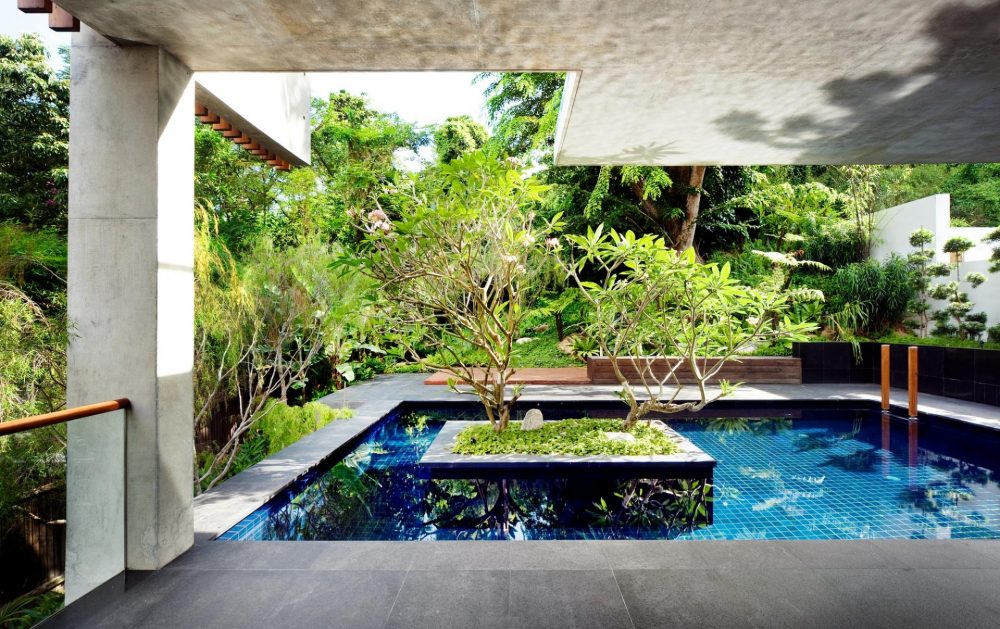Green is the colour, environmentally-friendly products are the game – and everyone is playing it. Everywhere you look there are ‘green’ alternatives to almost everything you can think of purchasing or using. But an increased sensibility towards our planet isn’t the only thing driving this trend – turns out, going green can save time and money too!
Pools are wonderful, but they can be costly to operate without some attention to measures that can significantly lower those costs. And when it comes to safety for you and your family, using certified products, such as those that carry the EcoLogo™ designation can help you to ensure the products you use are the best for your family, your pool and the environment.
13 ways you save money and lessen your impact on your family, your pool and the environment
1. Stop Backwashing – Install a cartridge filter and save 500-1800 litres of water out of your pool every couple of weeks. Cartridge filters are easily cleaned using Clean filter cleaner.
2. Cover Your Pool – Prevent water, chemical and heat loss from evaporation. A three-fold solution.
3. Use a two speed pump – Use a two-speed pump to reduce the energy used during peak periods while the pool is being circulated by swimmers or for a few hours each evening. This can make a significant difference in the amount of energy you use, while you could also help to extend the life of your pump. 17
4. Upgrade your equipment – Switch from a one speed pump to a free magnet variable speed pump and see a cost savings of 30-70 % within the first month. Old pool heaters are not as efficient as newer heat pumps.
5. Point your jets downwards – Pointing your pool return jets downwards will direct heated water toward the bottom of the pool which allows the pool to heat up faster than if jets were directed inches from the pool surface. Jet extensions are also available at your Sani Marc Dealer to improve water direction.
6. Use hydro-less sanitation solutions – Salt pools may be popular but contrary to the perception of most, when it comes to their impact on the environment, there isn’t much worse. The waste water from backwashing or draining is harmful to vegetation, lakes and streams. Also, salt pools require hydro to generate the salt into a chlorine sanitizer. UV systems, Ozonators and Ionizers all use hydro and none are recognized by Health Canada as safe methods of sanitation in swimming pool water. If it’s a system that uses less time and chemicals you’re looking for – turn instead to alternative sanitizers that provide results with less environmental impact such as Pool Naturally andConcept 10.
7. Use EcologoTM Pool Water Care Products – EcologoTM Certified products are the only products certified by the government to be non-toxic, non-irritating, bio-degradable, phosphate free and safe for you, your family and the environment.
8. Use Enzymes – Natural enzymes are an excellent and environmentally-friendly answer to removing the organic build-up in your pool. Enzymes will reduce chlorine demand and can enhance your water quality significantly.
9. Keep it Clean – Debris and leaves in the pool creates more work for your filter and results in greater chemical use. Keep your pool and surrounding area free of debris and leaves and not only will it look nicer – it’ll help to save chemicals and energy too. For additional tips on cleaning – see our Cleaning 101 section.
10. Choose Solar – Solar heating is the most environmentally friendly option available and will pay for itself within 4-5 years. Solar accent lighting around your pool for evenings is also an excellent way to promote safety and conserve hydro. If solar lights aren’t for you, choose low voltage lighting options as an alternative to solar.
11. Purchase with recycling in mind – Fencing, decking, patio furniture can all be made with recyclable materials. Re-paint patio furniture, benches or adopt a rustic décor style.
12. Use sustainable or reclaimed wood – Purchase items that have a seal from the FSC (Forest Stewardship Council) or SFI® (Sustainable Forest Initiative). Wood harvested under these forestry certification programs is done so with conservation and new growth initiatives.
13. Re-use rainwater – Water plants, vegetation and lawns surrounding the pool with water collected from rainfalls.

